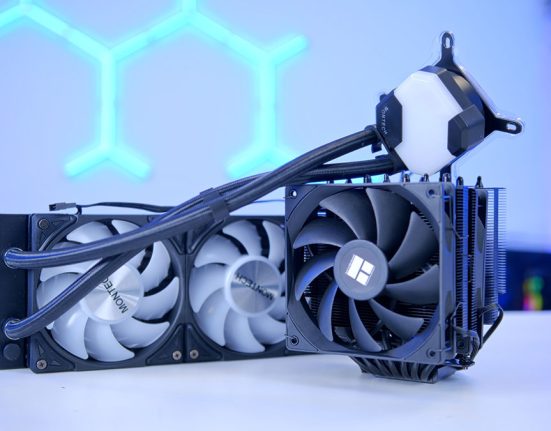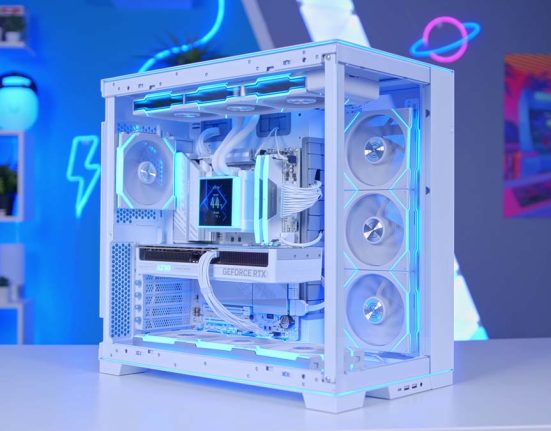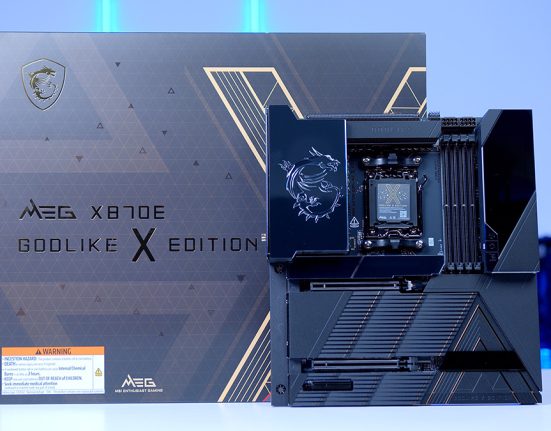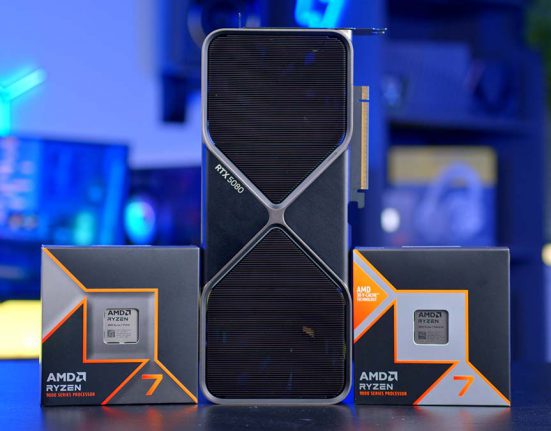We’ve got our hands on Corsair’s latest case release, the Corsair FRAME 4500X. It is pretty stunning, and this can only mean one thing – it’s time to build a powerful gaming PC to put this case through its paces!
Featuring an all-white X870 motherboard from GIGABYTE AORUS and a powerful RTX 5080 GPU, this build delivers excellent gaming performance with top-tier aesthetics.
In this article, we’ll give you all the facts that you need to know about this PC build so you can grab a couple of parts from our selection of components if you like, or even make an informed decision as to whether you’d like to build this yourself. If you want to see the PC being constructed to get a feel for how it’ll be, there is a video at the bottom of the article going through the start-to-finish process.
Components
CPU: AMD Ryzen 7 9800X3D

The AMD Ryzen 7 9800X3D is a powerhouse gaming CPU, building on the legacy of its predecessor, the market-dominating Ryzen 7 7800X3D. Featuring 8 cores and 16 threads, it leverages AMD’s enhanced 3D V-Cache to deliver exceptional performance across gaming, multitasking, and memory-intensive workloads. Despite its high output, it maintains modest cooling requirements, making it a practical choice for high-performance builds such as this. The expanded 96MB of L3 V-Cache accelerates data access, resulting in faster program execution, smoother multitasking, and improved responsiveness in demanding applications like video editing and AAA gaming. Another consideration is that this performance leader is set to carry you through several years of gaming, meaning you shouldn’t need to upgrade anytime soon.
CPU Cooler: Corsair iCUE LINK TITAN 360 RX
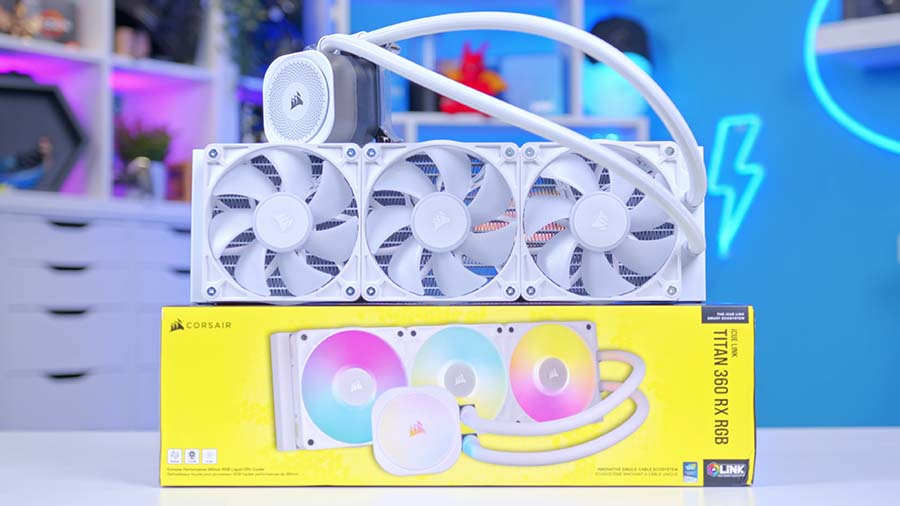
For the cooler, we have chosen the Corsair iCUE LINK TITAN 360 RX to maintain visual consistency across the build. Sticking with a single brand helps unify software and lighting control, reducing the number of apps needed and freeing up storage.
If you plan to pair it with the Corsair FRAME 4500X case, be aware that the RS-R ARGB variant includes RS fans that use standard 4-pin PWM and +5V ARGB connections- not iCUE LINK. This breaks visual and software consistency, and the RS fans won’t integrate with the TITAN’s iCUE LINK hub, meaning that you’ll have to connect the fans to the motherboard, opposed to Corsair’s iCUE LINK hub. To avoid paying for two hubs that are included in the component cost (£59.99/$59.99 each) and maintain complete compatibility, you should either stick with the FRAME 4500X RS-R ARGB case and choose the Corsair Nautilus 360 RS ARGB cooler instead of the TITAN. The Nautilus uses the same RS fans as the case, keeping both visuals and connections aligned while saving money. Alternatively, if you prefer this TITAN 360 RX cooler and its iCUE LINK ecosystem, pair it with the FRAME 4500X LX-R RGB LINK model, omitting the hub.
This CPU cooler is an excellent choice that performs very well, keeping even the hottest and most demanding CPUs, such as the i7-14700K, within a functioning and cool range. It’s a 360mm all-in-one cooler with three fans that can reach a maximum speed of 2100RPM. While it’s not the best-performing cooler on the market, you have to consider that the AMD Ryzen 7 9800X3D doesn’t run extremely hot, so this cooler is actually more than sufficient for this build. It’s a gorgeous cooler with some pretty interesting features, ranging from Hot-Swappable Pump Caps for ultimate personalisation to ease-of-assembly features like pre-installed fans.
Motherboard: GIGABYTE X870 AORUS ELITE WIFI7 ICE
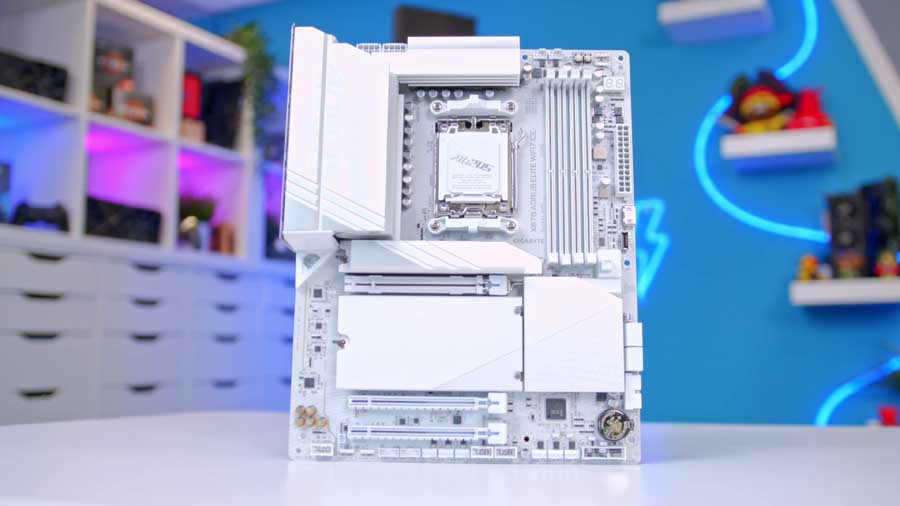
This motherboard is the white colour variant of the Gigabyte X870 AORUS ELITE WIFI7 that we have already reviewed. The Gigabyte X870 AORUS Elite WiFi7 ICE
is a solid ATX motherboard that offers a well-rounded set of modern features. There’s widespread PCI-E 5.0 compatibility, improved overclocking support, numerous expansion options, and a vast selection of tool-less mechanisms that streamline the assembly process. Additionally, this is one of the more affordable X870-based boards we’ve reviewed, offering massive value for those seeking an affordable mid-range option, which helps keep the overhead building cost lower.
| Specification | Gigabyte X870 AORUS Elite WiFi7 ICE |
|---|---|
| Form Factor | ATX |
| Supported Memory | 256GB DDR5 up to 8200MT/s (OC) |
| PCI-E x16 Slots | 1 x PCI-E 5.0 1 x PCI-E 4.0 (x4 electrically) |
| PCI-E x4 Slots | 3 x PCI-E 5.0 (M.2) 1 x PCI-E 4.0 (M.2) |
| VRM Power Phases | 16+2+2 |
| Front IO | 1 x USB 3.2 Gen2x2 Type-C 1 x USB 3.2 Gen1 Type-A 2 x USB 2.0 |
| Rear IO | 2 x USB4 Type-C (DP-Alt Mode) 4 x USB 3.2 Gen1 Type-A 4 x USB 2.0 Type-A 2 x USB 3.2 Gen2 Type-A |
| Audio | 1 x Optical S/PDIF 2 x Audio Jacks |
| Networking | 2.5 Gigabit LAN WiFi 7 |
This motherboard offers excellent PCIe expansion, with widespread Gen5 support across both the GPU and M.2 slots. It also supports memory overclocking, allowing up to 256 GB of DDR5 to reach speeds of 8200 MT/s. A generous array of USB ports ensures broad compatibility with a wide range of peripherals and devices, whether for gaming or general use.
RAM: Corsair Vengeance RGB DDR5 32GB

The Corsair Vengeance RGB DDR5 RAM is another part that contributes to the reliable 4K gaming performance of this build. More specifically, the kit used is the 32GB option with speeds of up to 6000MT/s and a CL36 CAS latency. 32GB of DDR5 memory is more than enough to support blockbuster games for years to come, no matter the speeds or latency of the kit being used. Corsair Vengeance RAM kits are incredibly stable and solid choices in any build, and not only that, but the branding also ties in, making the RGB more cohesive and flow easier.
Whilst it’s possible to pick up a DDR5 kit with transfer speeds of up to 8000MT/s for this build, thanks to the motherboard of choice, these kits can be quite pricey for the performance gained. Because of this, we’ve decided to stick to a slightly more affordable option, as it will result in similar performance levels while allowing funds to be put to good use on other parts.
SSD: Samsung 9100 Pro

This is the 4TB Samsung 9100 Pro link:
The Samsung 9100 Pro is built on the latest PCIe Gen5 interface, offering roughly double the speed of its predecessor, the Gen4-based Samsung 990 PRO. It’s available in four capacities ranging from 1TB to 8TB, making it suitable for demanding tasks like gaming and 4K video editing. For this build, we’ve opted for the 4TB model to strike a smart balance between long-term value and cost – without stretching the budget for the 8TB version. In testing, the 9100 Pro has proven to be one of the best SSDs we’ve used, delivering uncompromising performance and exceptional endurance.
GPU: GIGABYTE AORUS GeForce RTX 5080 MASTER 16GB

With a powerhouse CPU, it makes sense to pair it with an equally capable GPU to unlock true 4K performance. That’s why we’ve chosen the AORUS GeForce RTX 5080 MASTER 16GB. Not only is it visually striking, but its performance is exceptional at 1440p and outstanding at 4K. The 16GB of GDDR7 VRAM plays a critical role in delivering smooth frames and high-fidelity textures, more specifically in demanding 4K workloads. This is the pinnacle of performance, where everything converges.
Case: Corsair FRAME 4500X
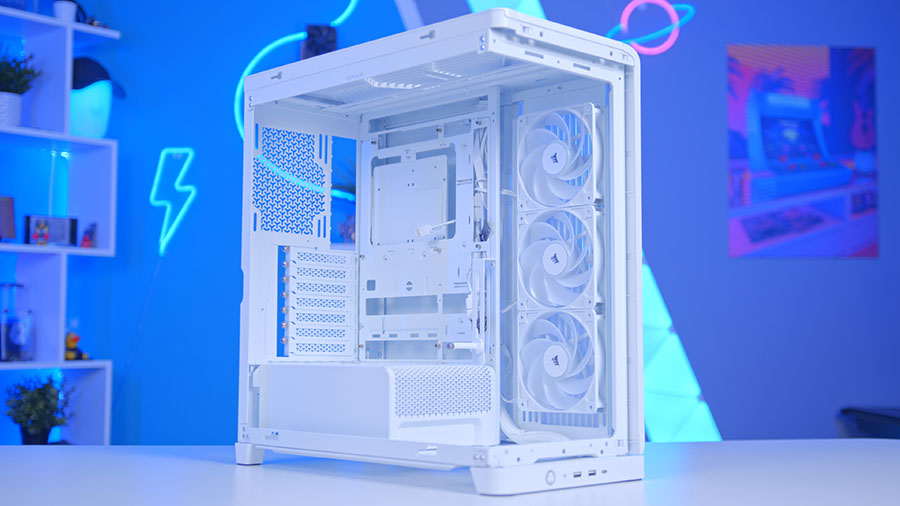
4500X RS-R ARGB Variant
LX-R RGB LINK Variant
This chassis was released in September 2025. At GeekaWhat, we enjoyed building and reviewing this case due to how well thought-out it is. Corsair have been meticulous and thoughtful with their design choices for this chassis, and we think you will like it too, just due to how easy it is to use. There are two model options available for this case: the 4500X RS-R ARGB and the 4500X LX-R RGB LINK. To gain a better understanding of the differences between the two variants, we recommend reading our Corsair FRAME 4500X Review, where we provide an in-depth look at all the specs, features, and nuances it offers.
| Specification | Corsair FRAME 4500X (4500X RS-R ARGB & 4500X LX-R RGB LINK) |
|---|---|
| Form Factor | Mid-Tower |
| Motherboard Support | Mini-ITX | Micro-ATX | ATX | E-ATX (305 x 267mm) |
| Case Dimensions (L x W x H) | 542 x 250 x 556 mm |
| Front IO | 2x USB 3.2 Gen1 Type-A 1x USB 3.2 Gen2 Type-C Power Button Combo Mic/Headphone Jack |
| PCI-E Slots | 8 x Horizontal 3 x Vertical |
| Colour Options | Black | White |
| Max Clearance | CPU Cooler Height: Up to 185mm GPU Length: Up to 460mm PSU Length: Up to 250mm |
| Drive Support | Up to 2 x 2.5 inch Up to 1 x 3.5 inch |
| Fan Support | Front: No support. Top: Up to 3 x 120mm Bottom: Up to 1 x 120mm PSU Shroud: Up to 2 x 120mm Side: Up to 3 x 120mm Rear: 1 x 140mm |
| Radiator Support | Front: No support. Top: Up to 360mm Bottom: No support. PSU Shroud: No support. Side: Up to 360mm Rear: Up to 140mm |
| Pre-Installed Fans (Fan type is model dependent) | Front: None. Top: None. Bottom: None. PSU Shroud: None. Side: 3 x 120mm Rear: None. |
| MSRP 4500X RS-R ARGB / 4500X LX-R RGB LINK | $189.99 / $259.99 £169.00 / £214.99 |
Corsair’s FRAME 4500X is a thoughtfully engineered mid-tower chassis that makes building feel intuitive and refined. With support for E-ATX boards, vertical GPU mounting, and side-mounted radiator options, it strikes a balance between aesthetics and practicality. Whether you choose the RS-R ARGB or LX-R RGB LINK variant, the experience is smooth, and the airflow design is impressively well considered.
PSU: Corsair RM1000X Shift Series
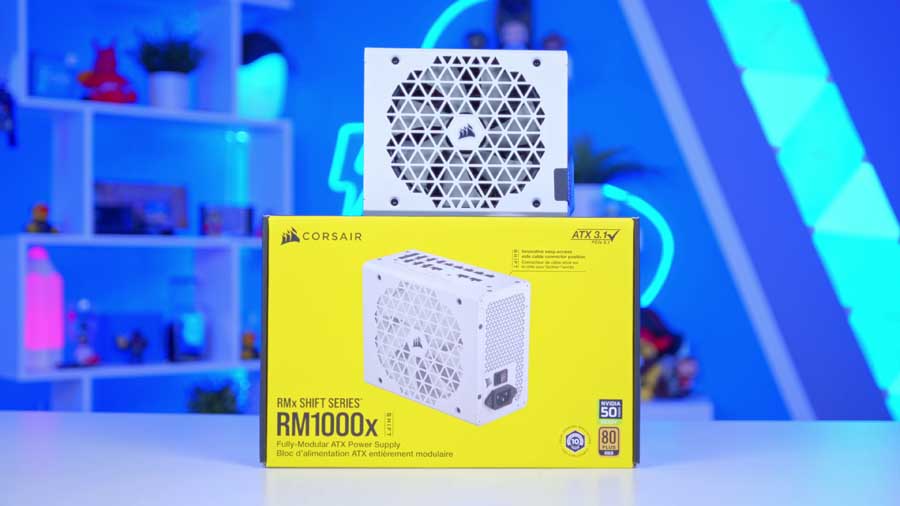
When selecting a PSU, the most critical factor is ensuring it meets the power demands of your GPU. The RTX 5080 is a powerhouse, drawing at least 850W, so it’s essential to choose a unit that can reliably deliver that. We’ve selected the Corsair RM1000X Shift Series PSU to maintain consistency in branding and colour theme.
Gallery

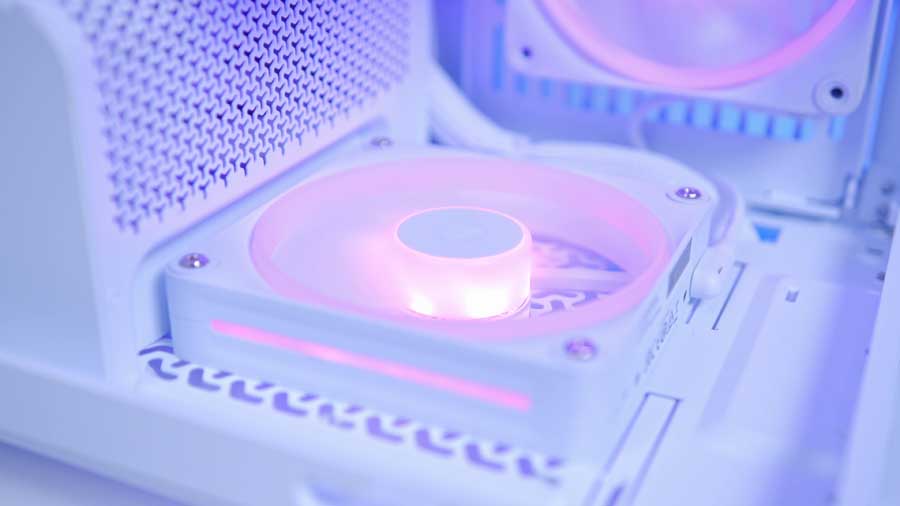
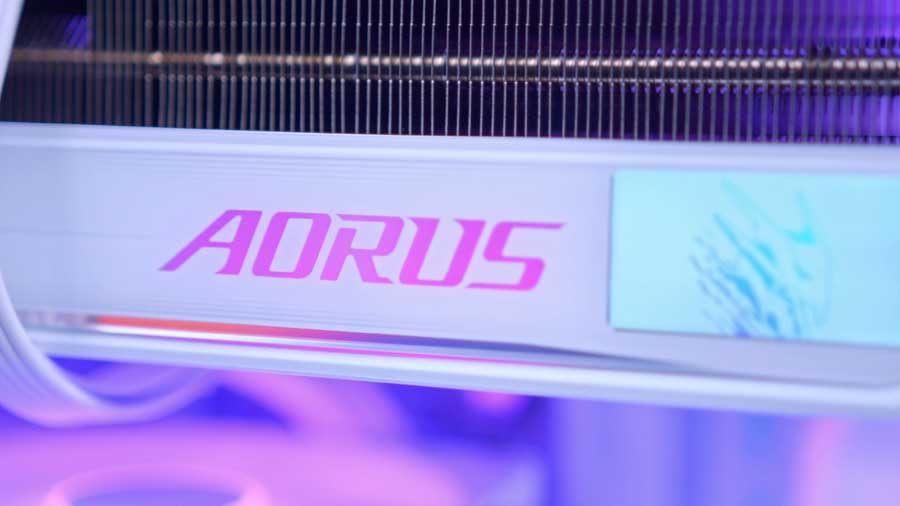
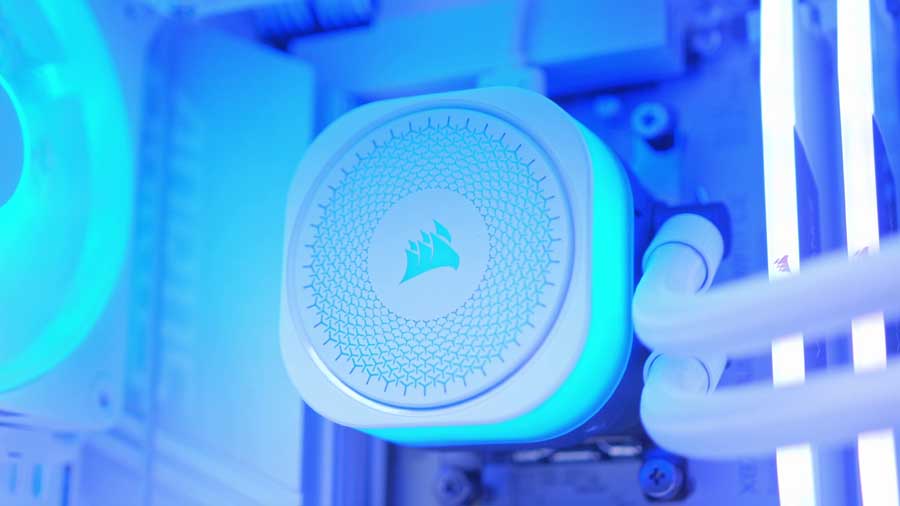
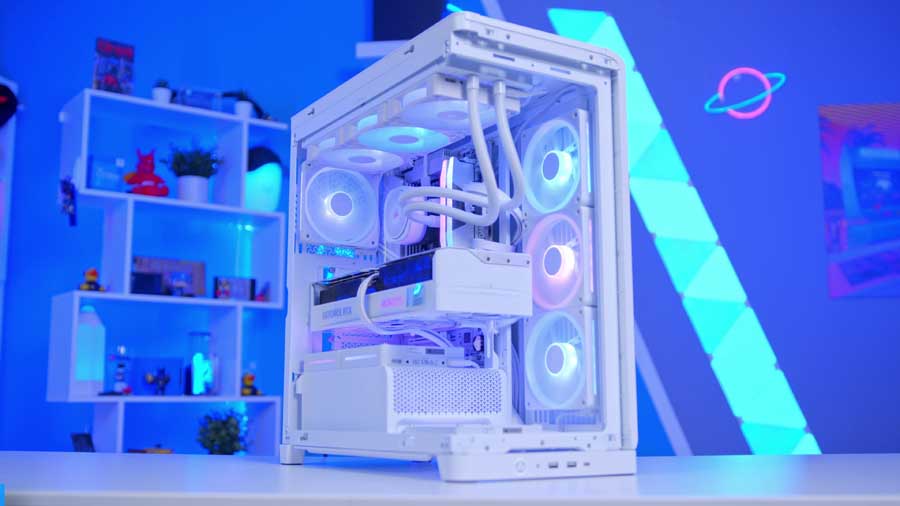
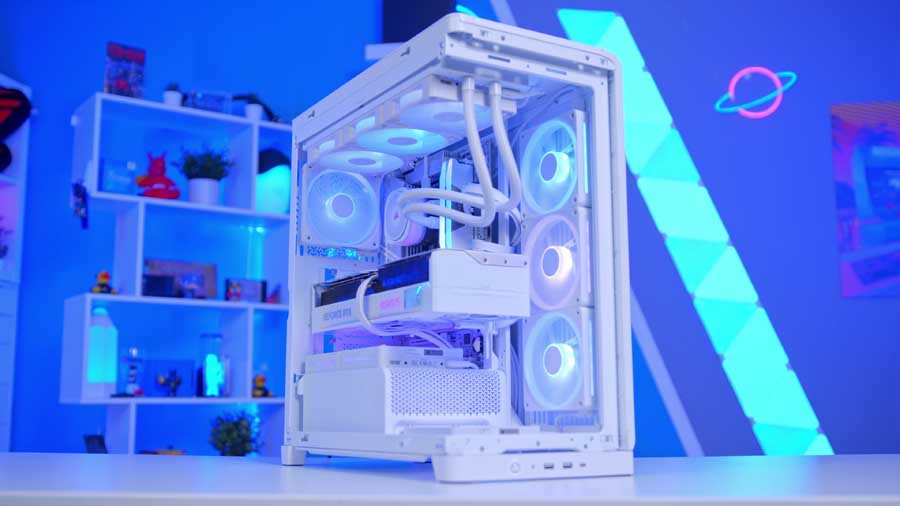
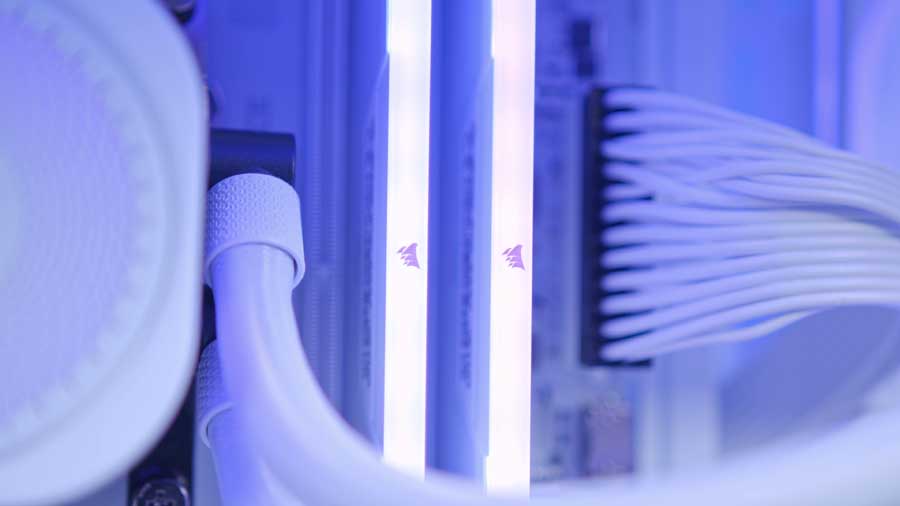
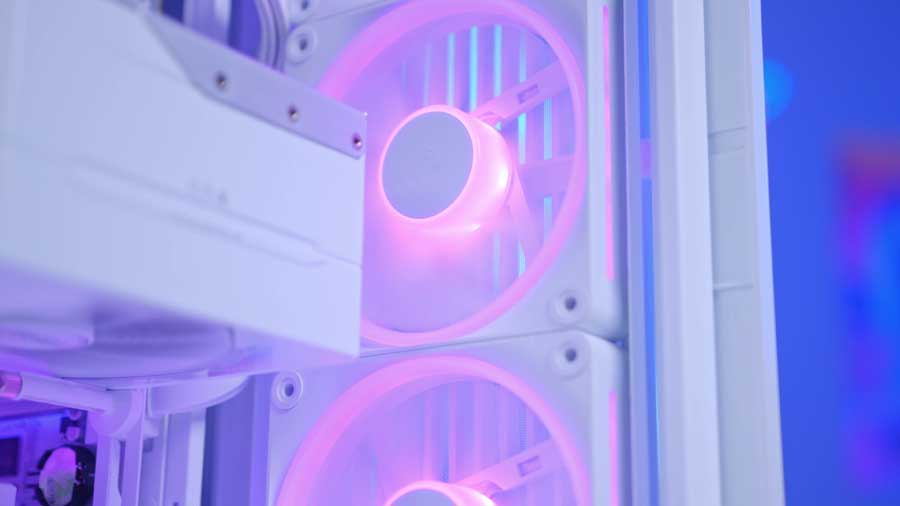
Performance
| Game Title | Average FPS | 1% Lows | 0.1% Lows |
| Cyberpunk 2077 | 95 | 45 | 16 |
| COD: Black Ops 6 | 122 | 73 | 41 |
| Marvel Rivals | 105 | 55 | 40 |
| Apex Legends | 288 | 154 | 46 |
| Doom: The Dark Ages | 63 | 49 | 34 |
| Fortnite (1080p) | 416 | 178 | 106 |
These benchmarks show that this PC is clearly a high-end PC at 4K. We can see that Cyberpunk 2077 and Doom: The Dark Ages show the strain of heavy ray tracing and complex environments, with average FPS dipping below 100 and 1% lows revealing occasional stutter – especially in Cyberpunk, where 0.1% lows hit just 16 FPS.
COD: Black Ops 6 and Marvel Rivals maintained a solid average of above 100 FPS, with commendable 1% and 0.1% lows, indicating smoother gameplay even during intense moments. In Apex Legends, the average frame rate was exceptionally high at 288 FPS, and even its 1% lows, at 154 FPS, are higher than the average FPS of most other titles. Fortnite is our only outlier as we only test this game in 1080p, and it unsurprisingly dominates with a 416 FPS average. The 0.1% lows are still above 100 FPS, making it ideal for competitive play as well.
Overall, this system handles modern titles with ease, although games like Cyberpunk and Doom still push the limits at 4K resolution. The 1% and 0.1% lows are especially useful here. Demonstrating how frame drops can impact fluidity and help distinguish between raw FPS and actual gameplay smoothness.


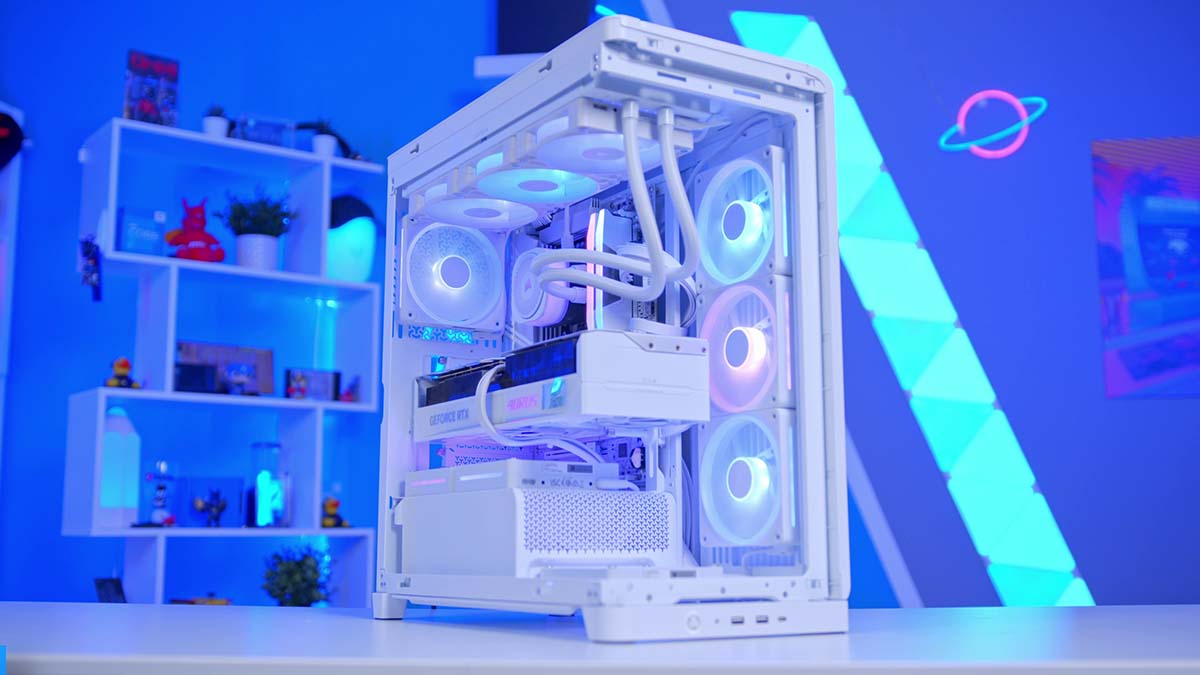
![FI_[DM82] TT MineCUBE Build](https://geekawhat.com/wp-content/uploads/2025/12/FI_DM82-TT-MineCUBE-Build-551x431.jpg)
![FI_[DP056] Antec flux M + 9060XT](https://geekawhat.com/wp-content/uploads/2025/12/FI_DP056-Antec-flux-M-9060XT-551x431.jpg)
